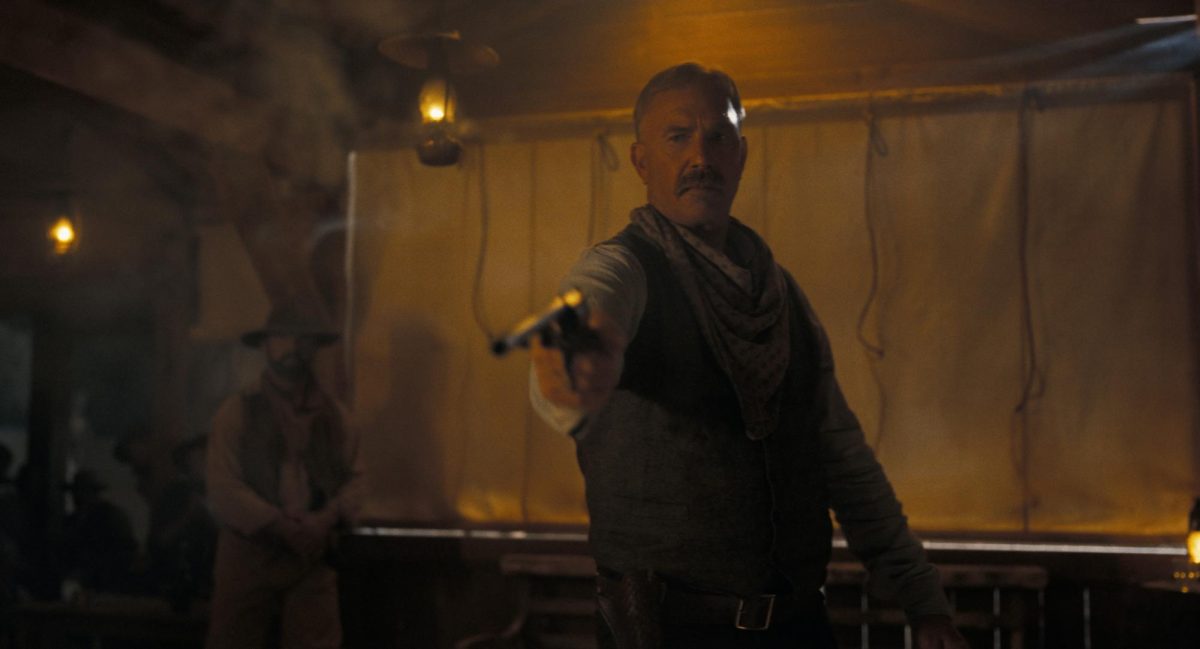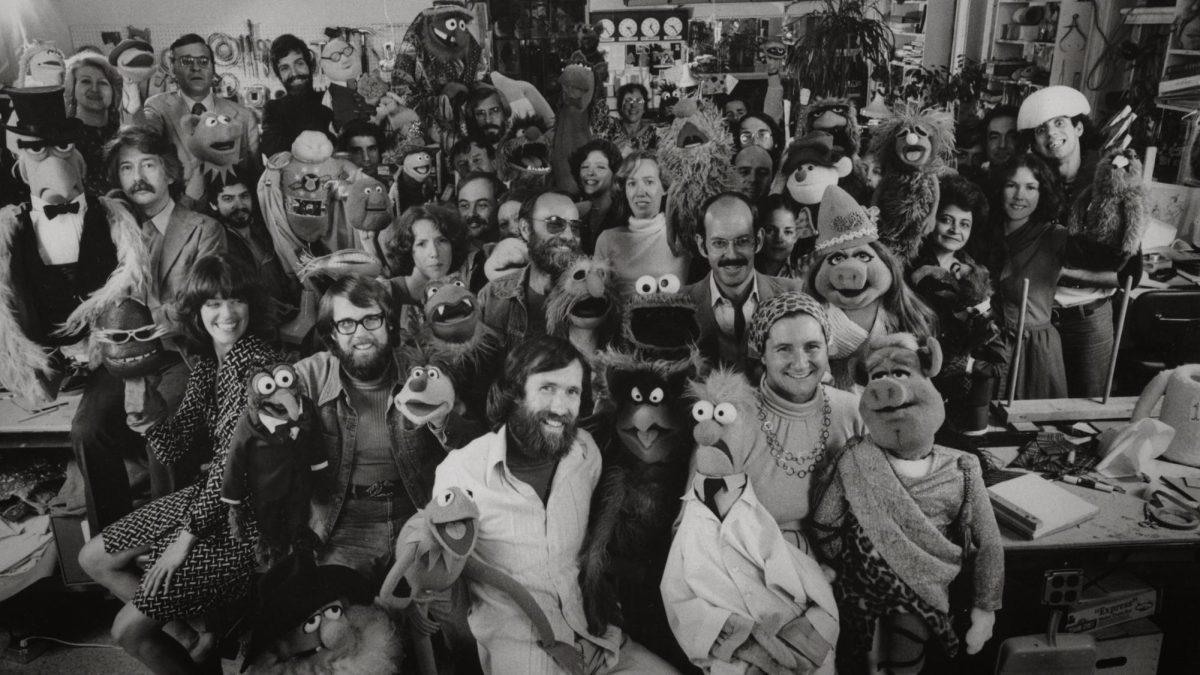“Our Country’s Good,” the tale of an Australian penal colony in 1788, gets lost in translation onstage at the Babcock Theatre. An impressive feat, considering the tale is about English and Irish criminals who have been transported to Australia to build New South Wales in the late 1700s.
“Our Country’s Good” began promptly at 7:30 p.m., though many audience members didn’t know it. The group of students behind me were chatting about how “savage” one of them had been on an Instagram story about an argument with an ex. Once the lights dimmed, this group and several others jumped up and started singing a song of farewell. Dressed in modern clothing to better blend in with their civilian counterparts, the cast members rushed onstage to change and begin the show. Their appearance was so unexpected that few, if any, members of the audience caught the entirety of what the actors said.
From this point onward, understanding the dialogue was, like a television with bad reception, spotty at best. For the sake of realism, the cast attempted — with varying levels of success — to master a myriad of accents to construct a story of survival, hope and fear. This attempt at realism, while appreciated, cost the drama much of its timing and delivery.
While singing, the cast was easy to understand and quite engaging. The same could not be said throughout the rest of the play. Some characters only needed a chance to warm up, like Benjamin Young (Captain Phillip/John Wisehammer). Young’s first line was difficult to decipher, but he became progressively clearer and was one of the standout actors of the show. Ryan Gondo (Tench/Aborigine/Black Caesar) and Mike Behan (Captain Collins/Sideway), also standouts, were the easiest to understand from the beginning. Actresses Ashley Marian Ramos (Lieutenant George Johnston/Duckling Smith) and Katryna Williams (Lieutenant Dawes/Liz Morden) also gave the play a somewhat clear start.
Though the enunciation wasn’t amazing, the costuming and staging of “Our Country’s Good” was. Taking advantage of the unique Babcock Theatre stage, the cast creatively formed tents, props and the outdoors with a series of ropes hung from above center stage. The stage was painted to resemble a ship’s floor, with small wooden posts spaced evenly around the stage to dock the ropes in specific positions. More rope hung at the back of the stage to create an offstage area and add to the colonial setting of the play.
Several props were fantastically designed and fascinating to watch in action. The boat Harry (Call Vande Veegaete) and Duckling used to take a short trip down the river was the most memorable of these. With hidden wheels and strategically placed ropes, the boat glided across the stage as if it were really in the water.
The combination of the time period, near-water setting, farming convicts and the marines’ survival created an intriguing and beautiful series of costumes. Liz Mardon’s costume was one of the most elaborate without looking fake. Without time for even the quickest of costume changes, the women’s skirts were easily transformed into pantaloons and covered with jackets, allowing them to play their male counterparts.
Creating these “Cloud Atlas-esque” counterparts was a fascinating aspect of the play, but it added another layer of confusion. The set-up of the stage had one drawback: those sitting in typical audience seats were unable to see the faces of half the cast. This fact, coupled with blurred accents and similar costumes attributed to the same person, created several confusing moments in which Young’s — and several others’ — characters blended together or just weren’t realistic due to body type and tone.
Once the comedy aspect of “Our Country’s Good” was introduced the play picked up, but overall I wouldn’t recommend seeing this rendition. At least six others agreed — they walked out at intermission and never came back. “Our Country’s Good” plays at the Babcock Theatre until April 15 with showings at 7:30 p.m. and 2:00 p.m. on the 14 and 15. Tickets are free for University of Utah students and $18 for general admission. There are discounts for seniors and U faculty or staff.
@TheChrony


















Marie Cortes • Apr 14, 2018 at 9:55 pm
There were many errors in this piece that could have been clarified if the author had referenced her program after writing. I feel if the author is going to criticize the piece on its clarity, she should have impeccable clarity. Also, I am offended by the body shaming of the author, “(characters) just weren’t realistic due to body type and tone.” I feel is a direct insult to the actress who played Liz Morden. Just because the show referenced how “light” the character is doesn’t mean a bigger girl can’t play it. There is an aspect called suspension of disbelief that happens for any theatre piece. I expect my theatre reviewers to at least research the theatrical aspect of a show. Not all shows are based on pure, mindless entertainment and should not be the sole elements of reviewing a piece.
Kobi Baker • Apr 17, 2018 at 2:20 pm
The reality is that the theatrical world is not so nice. Body type and tone are crucial to casting, and they should be. I would not want to go to a production of Beauty and the Beast and see a scrawny 5’3 actor portraying Gaston. That is just not the character. The playwright gives characters descriptions for a reason, and although it seems like it would be nice to live in a world where anyone can portray anybody, the reality is that it would invalidate the entire message of many pieces. It is our differences that make us beautiful, and many shows try to send a message about the struggles of a certain race, body type or social setting. So no, I do not believe the author of this article stepped out of line with their body type comment.
Anonymous Monkey • Apr 13, 2018 at 9:23 pm
Um, did you see the whole play?
алексей гунчикова • Jul 22, 2018 at 12:28 pm
Almost everyone left during intermission. Understandable since the entire thing was hard to comprehend.